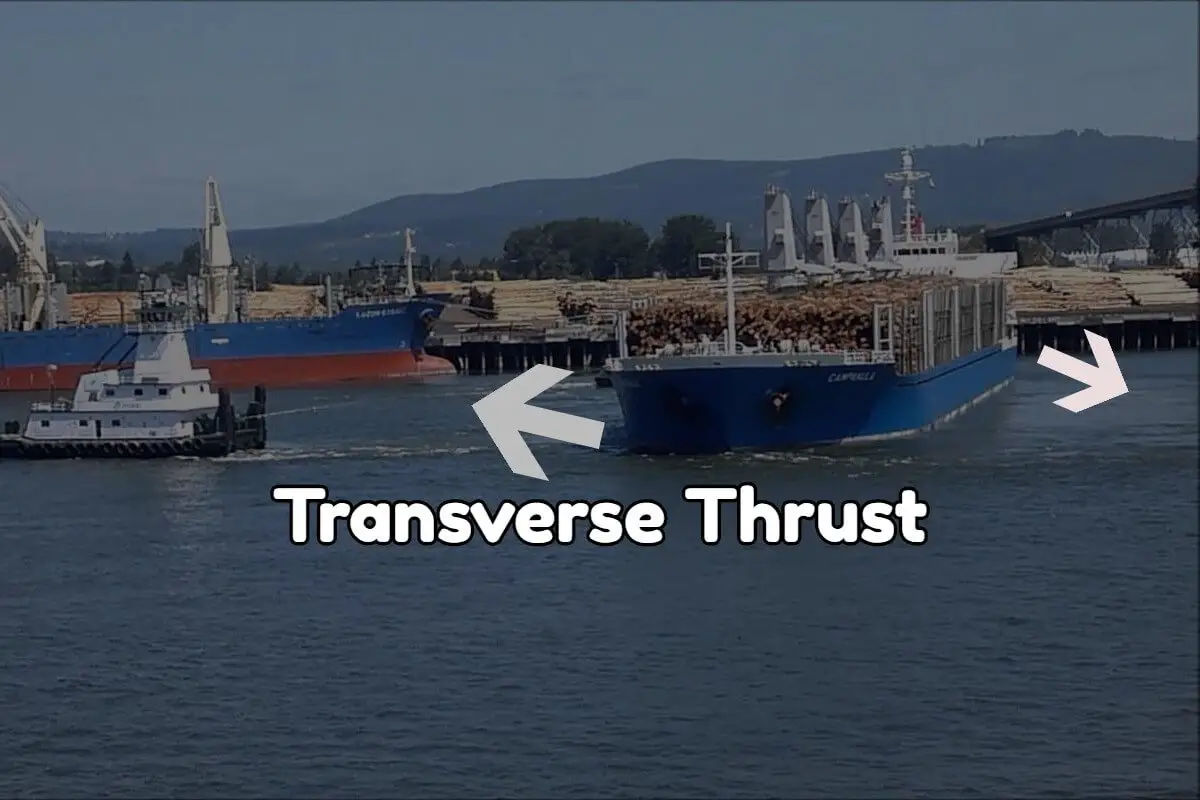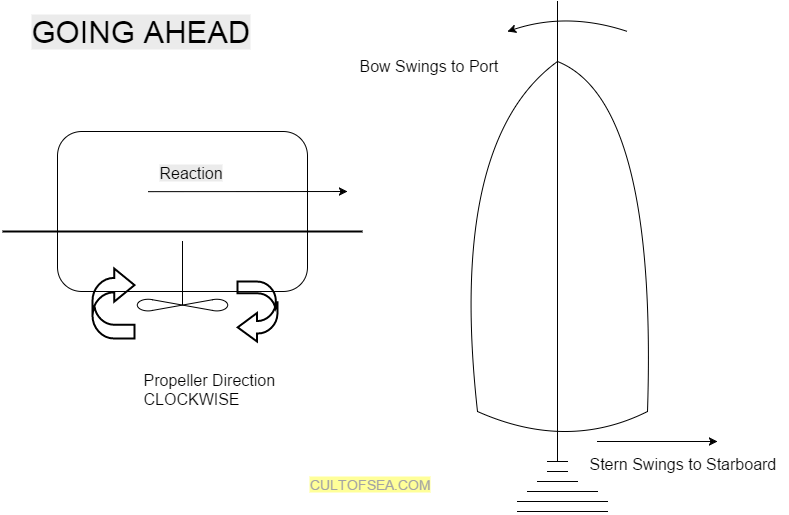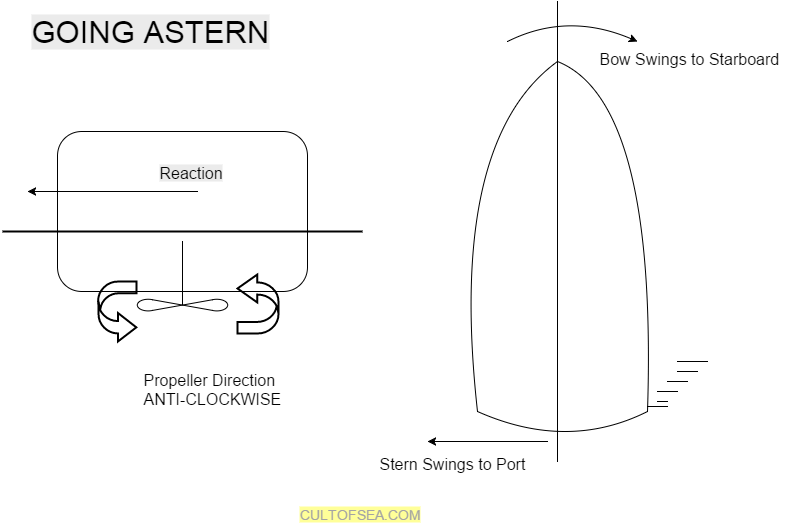Transverse Thrust
The force with which the water acts upon the propeller blades is not just in the longitudinal direction but also has an athwartships component. This is known as transverse thrust.
Going Ahead
If we look at a ship with one right-handed propeller (i.e. the propeller rotating n a clockwise direction when going ahead and as viewed from astern) and the rudder on the centre line the following situation is the norm:
In the initial stages of the ship getting underway, the vessel’s speed is low but the engine (and, therefore, the propeller) is at high Rpm ahead.
During this period, the transverse thrust is directed to starboard and the ship’s turns to port. Please note that as the depth increases, water pressure increases, therefore there will be difference in pressures on top and bottom of the propeller blade. This is due to the fact that the pressure from the water is higher on propeller blades in their deeper position than in their shallower position. As the water above develops turbulence and the air is sucked in which reduces the pressure on the top blade. As the ship gradually increases the headway, the turbulence is reduced and the pressure on the top blade increases.
The Top blades of propeller (right handed and fixed pitch / Clock wise direction) not only pushes water forward but also to the starboard. The bottom blades pushes the water to the port. As said earlier, due to differece in pressure on top and bottom of the blade, the bottom blade push to the Port would be greater than the top blade which is pushing to Stbd. The resultant push of water to the port will swing the ship to the Stbd at the aft and in turn directing the Fwd of the ship to Port.
Going Astern
If we look at a ship with one right-handed propeller (i.e. the propeller rotating n an anti-clockwise direction when going astern and as viewed from astern) and the rudder on the centre line the following situation is the norm:
The ship proceeds at low speed and high RPM when going astern. The Transverse thrust in this case directed to port and the ship will turn to starboard.
The cause of the transverse thrust is the same as the going ahead case, there being higher pressure on the propeller blades in their deeper position, and the resulting thrust is directed to port. In addition, the water pressure on the starboard quarter will be higher than on the port quarter since the water from the propeller blades is thrown upwards obliquely on the starboard side and downwards obliquely on the port side.
If ship reduces her way from 5-6 knots to zero when going astern she will,(with a right handed propeller) begin to turn to starboard unless the effects from the wind and current are more powerful and cause a counter force to port. When going astern at higher speeds, no turn to starboard is noticed.
The magnitude of the transverse thrust when going astern is in the order of 10-14% of the total thrust on the propeller. Hence, for a ship with an astern power of 7400kw the transverse thrust is of the same magnitude as the thrust from a bow thruster.



Leave a Reply